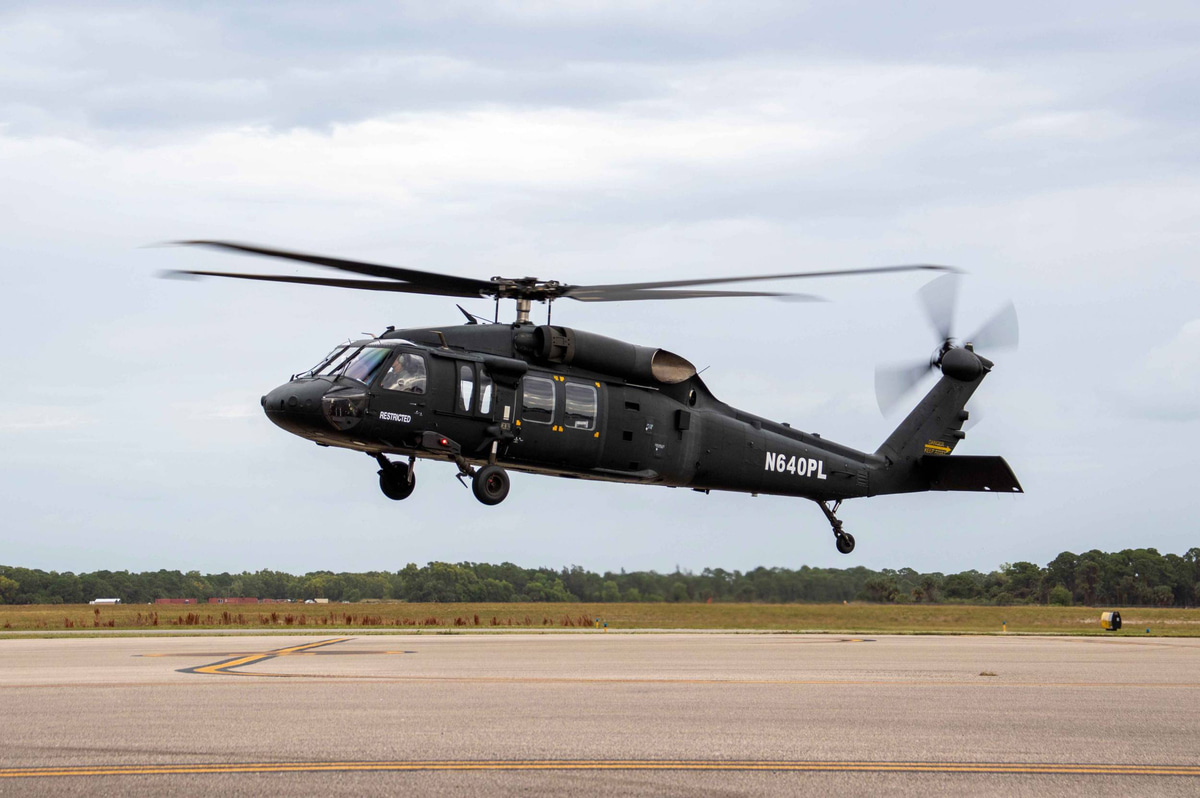Navigating Quality: Sikorsky S 70 Helicopter Modern Technology Insights
Navigating Quality: Sikorsky S 70 Helicopter Modern Technology Insights
Blog Article
Discover the Modern Technology Behind the Outstanding S-70 Airplane
The S-70 airplane stands as a testament to innovative modern technology and advancement in the field of aeronautics. The engine capacities of this aircraft are exceptional, providing unparalleled power and performance. As we begin to untangle the technical wonders behind the S-70 airplane, a world of aerospace excellence waits for.
Avionics Solutions
Avionics systems, integral components of the S-70 airplane, incorporate an innovative variety of electronic instruments and interaction devices vital for flight navigation and procedure. At the core of the S-70's avionics collection are modern navigating systems that supply real-time information on the airplane's position, elevation, speed, and various other important trip criteria. Additionally, the avionics systems include communication tools that makes it possible for smooth interaction between the aircraft and air traffic control, as well as other airplane in the vicinity.
Blades Design
The rotor design of the S-70 aircraft is an important component that straight influences its efficiency and ability to move in different trip problems. The S-70 includes a primary blades system that includes four composite blades specifically created to give outstanding lift capability and security. These blades are engineered to minimize resonance levels, decrease sound, and enhance the overall performance of the blades system.
Additionally, the S-70 airplane is outfitted with a tail rotor that plays a crucial duty in managing the airplane's yaw movement. The tail blades style is maximized to counteract the torque created by the primary blades, making sure controlled and balanced trip procedures. Additionally, the tail rotor improves the S-70's dexterity and responsiveness during demanding flight maneuvers.
Engine Efficiency
Maximizing the engine performance of the S-70 airplane is vital for matching the blades design's efficiency and making certain smooth flight operations. These engines offer a mix of high efficiency and fuel effectiveness, necessary for a versatile aircraft like the S-70.
The engine's innovative technology includes a dual-spool layout, which improves power delivery and gas performance. This design enables better control of the engine's power outcome, boosting efficiency throughout different trip conditions. Furthermore, the engines are geared up with a Complete Authority Digital Engine Control (FADEC) system, which optimizes fuel circulation and power output while ensuring smooth operation and decreasing pilot work. In general, the engine efficiency of the S-70 plays a vital function in the aircraft's abilities and mission success.
Stealth Abilities
Enhancing the S-70 aircraft's stealth capacities includes integrating innovative products and aerodynamic design functions to reduce its radar cross-section. By lowering the radar cross-section, the aircraft can run with a lower chance of discovery by enemy radar systems, improving its survivability in aggressive settings. The S-70 includes stealth technologies such as radar-absorbing materials, special finishings, and shaping techniques to deflect or take in radar waves, making it a lot more tough for foes to detect.

Additionally, the S-70's style consists of attributes like faceted surface areas, serrated sides, and angled frameworks to scatter inbound radar signals far from the source, further reducing its presence on radar screens. These style components aid the aircraft accomplish a minimized radar trademark, allowing it to perform objectives quietly and escape opponent detection.
Moreover, the S-70's innovative avionics site systems and electronic war capabilities complement its stealth attributes, offering thorough defense versus possible dangers. sikorsky s 70. By integrating sophisticated technologies with stealth enhancements, the S-70 airplane demonstrates a high level of sophistication and effectiveness in contemporary combat situations
Trip Control Systems
Implementing advanced avionics, the S-70 aircraft incorporates innovative flight control systems to guarantee optimum ability to move and operational effectiveness. more helpful hints The airplane's trip control systems are composed of a mix of mechanical and electronic elements that work with each other to give stability and control during trip.

Conclusion
In verdict, the technology behind the S-70 airplane is absolutely impressive. The S-70 aircraft is a testament to the innovative technology and design expertise that goes into developing such a sophisticated airplane.
In addition, the avionics systems consist of communication devices that enables smooth communication in between the aircraft and air web traffic control, as well as other airplane in the vicinity.Additionally, the S-70 aircraft is furnished with a tail blades that plays a critical role in managing the aircraft's yaw motion.The flight control systems of the S-70 aircraft are created to adjust to various trip conditions, offering a stable and smooth flying experience for both military and noncombatant procedures. In general, the sophisticated flight control systems of the S-70 airplane contribute substantially to its outstanding performance and adaptability in numerous objective situations.
The S-70 aircraft is a testimony to the sophisticated modern technology and design knowledge that goes into developing such a sophisticated airplane.
Report this page